Boxelder bugs can be a nuisance in both the spring and the fall. They cause a ruckus as the weather warms and trees bloom and then they remerge in abundance in the fall. Sure, these pesky red and black crawling bugs aren’t dangerous but they can be extremely annoying. A boxelder bug infestation in your house can feel overwhelming, but don’t fret–Plunkett’s can help you get rid of boxelder bugs in the spring, fall, and all year long.
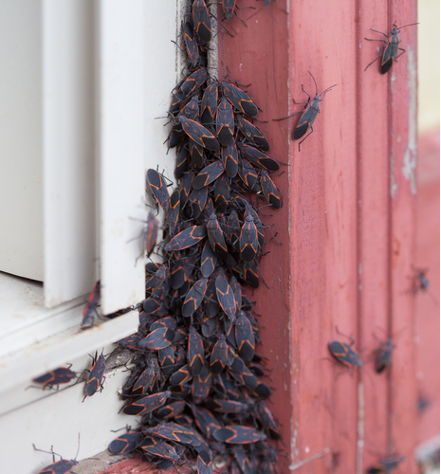
Box Elder Bugs Congregating Near Window
In order to minimize your boxelder bug problem, you need to keep them from congregating. That’s why Plunkett’s has provided all the information you need to repel these annoying orange and black bugs.
What are Boxelder Bugs?
Many folks will refer to these small orange and black bugs as boxelder beetles. However, that is incorrect. Boxelder bugs are a species of “true bug” and are found mostly on boxelder, maple, and ash trees. They are dark brown or black in color with reddish-orange wing veins. So, the next time you’re wondering, what are these black and red “beetles” in my house? Just know they are likely boxelder bugs and come out with a vengeance in the spring and fall.
The Boxelder Bug Life Cycle
These pesky creatures only live for a few days (up to a week) and the boxelder bug life cycle consists of three stages:
- Egg
- Nymph — If you see a bright red boxelder, it's likely a nymph.
- Adult
During the winter, you’ll likely find some relief from a boxelder bug infestation; boxelder bugs become more active during warmer temperatures.
How to Get Rid of Box Elder Bugs
Getting rid of a boxelder bug infestation doesn’t have to be complicated. Follow these tips to keep irritating red and black bugs away from your space:
1. Spray Boxelder Bugs with Dish Soap
To make your own boxelder bug spray, mix a tablespoon of dish soap into a spray bottle of water. As you find large groups of boxelder beetles clustered together, spray them with the mixture. You’ll kill boxelder bugs by saturating them fully with the water and dish soap mixture.
Spray the congregation of bugs until they disperse. Then, carefully scoop up and dispose of any bugs you’ve killed. Be careful not to crush them—when crushed, boxelder bugs release an unpleasant odor. In fact, their scent is why adult boxelder bugs don’t have many predators—their taste is just as bad as their smell. Spiders, for example, may eat a boxelder bug in a pinch, but it’s not their first choice of cuisine.
2. Clean Large Surfaces with Dish Soap
Boxelder bugs like to congregate on heat-reflective surfaces where they can soak up warmth. Once they’ve gathered on the exterior of a building, they can often find their way inside. To keep these bugs from hanging out on your home or business, spray or scrub down their perches with soapy water or scented cleaning solution.
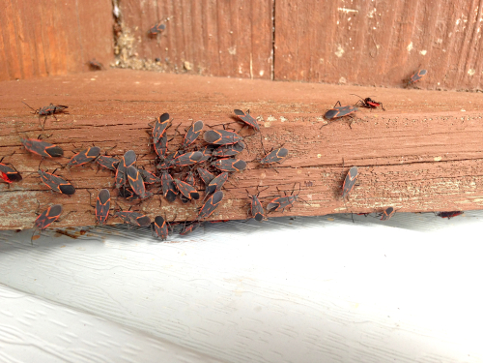
Box Elder Bugs Gathering on Home
Using a cleaning solution helps repel these small orange and black bugs and prevents them from returning. When you crush them, the foul smelling liquid actually attracts other bugs. Scrubbing and cleaning the problem area washes away the pheromones along with the unpleasant boxelder bug smell.
3. Vacuum Up the Box Elder Bugs
Vacuuming up boxelder bugs as soon as you notice them will help keep them away—it is an efficient way of boxelder bug removal. After you’ve sucked up the bugs, throw out the vacuum cleaner bag right away… otherwise you’ll see the determined red and black bugs crawl right out. Clean up the areas where you vacuumed with soapy water immediately after removing the boxelder bugs.

Vacuuming Up Box Elder Bugs to Prevent Future Infestations
4. Seal Up Doors and Windows
As boxelder bugs bunch up together, they push each other into gaps and cracks around their perches. Once they’re inside these gaps, they follow heat until they’re inside the building. To keep boxelder bugs out, seal gaps around your windows and door frames with caulk. Do the same for any openings you see along siding or the foundation of your home.
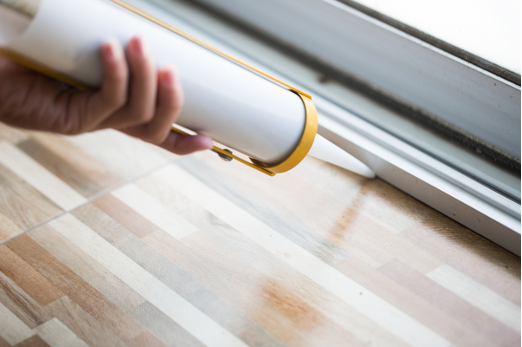
Sealing Up Window to Keep Box Elder Bugs from Entering Home
5. Seal or Replace Ill-Fitting Electrical Cover Plates
Boxelder bugs are attracted to heat, so they frequently end up in electrical outlets, switch boxes, heating ducts, or return air vents. Their flat bodies allow them to squeeze under plates that are loose or even slightly out of place.
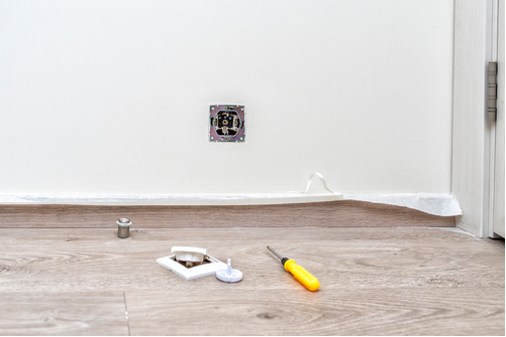
Removing and Replacing Ill-Fitting Electrical Cover Plates to Keep Box Elder Bugs Out
6. Remove or Trim Box Elder Trees
Seed-producing boxelder trees are what attracts boxelder bugs. If you have a tree on your property that produces those little “helicopter” seed pods, then it’s likely attracting boxelder bugs. Removing the tree will substantially reduce the number of boxelders around your home.
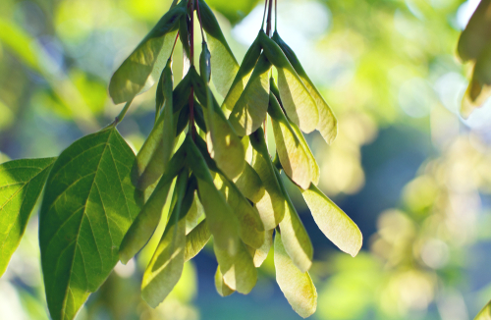
Box Elder Tree Leaves
If you can’t or don’t want to remove the tree, consider trimming it regularly instead. Mow or rake up seed pods as they fall as much as possible. The less comfortable boxelders feel in your yard, the less they’ll want to stick around.
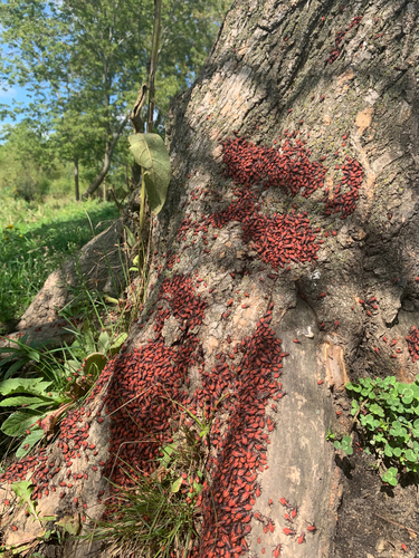
Box Elder Bugs Congregating on Box Elder Tree
Schedule a Service with Plunkett’s to Get Rid of Boxelder Bugs
If you’ve got boxelder bugs in or on your house and you’ve tried the tips above and nothing seems to work, we can help. Plunkett’s offers boxelder bug control and removal from homes and businesses. For the best results, have your pest control technician spray for boxelder bugs in the springtime and at the beginning of fall, for a boxelder free house. Get in touch with Plunkett’s today or fill out the service request form below to get and keep boxelder bugs out.








